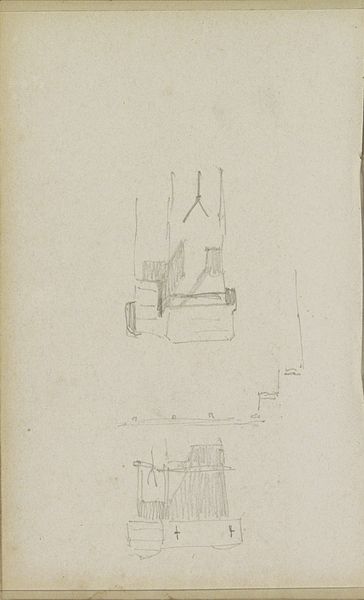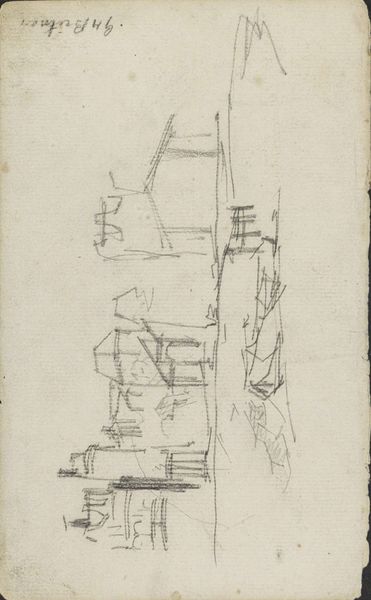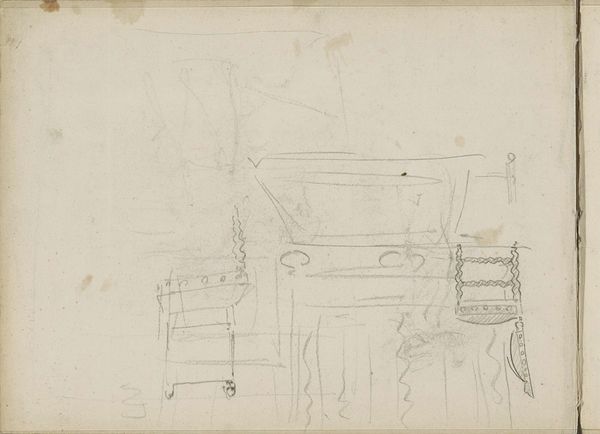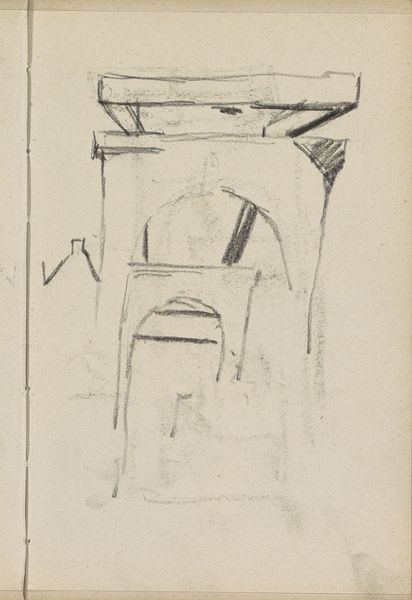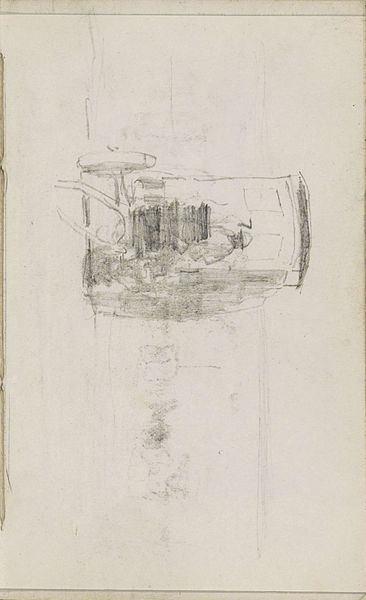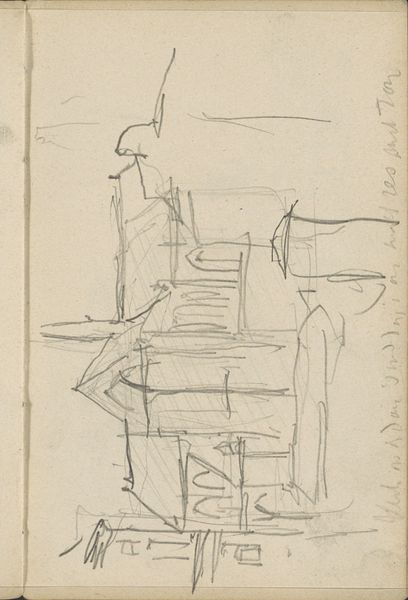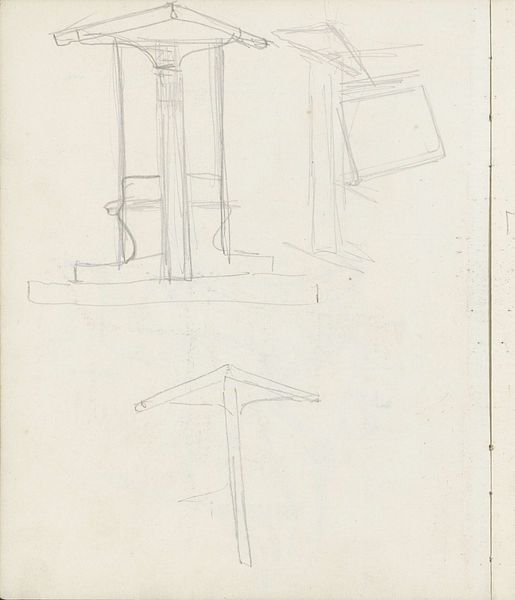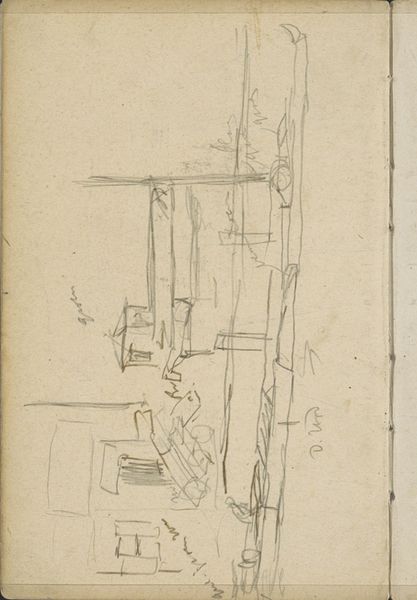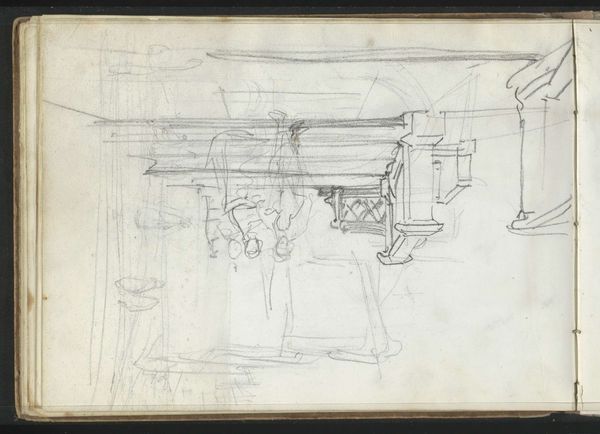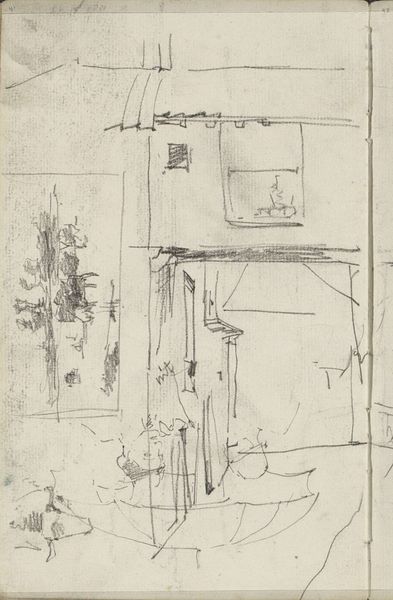
drawing
#
architectural sketch
#
drawing
#
amateur sketch
#
aged paper
#
toned paper
#
sketch book
#
incomplete sketchy
#
etching
#
architectural drawing
#
architecture drawing
#
initial sketch
Dimensions: overall (approximate): 14.7 x 8.5 cm (5 13/16 x 3 3/8 in.)
Copyright: National Gallery of Art: CC0 1.0
Curator: Meryon's “Moliere's Tomb,” from about 1854, captures a preliminary architectural sketch on toned paper. There's a fascinating intersection here of public admiration for a celebrated playwright with the nascent urban planning preoccupations of mid-19th-century Paris. Editor: It appears almost ghostly, like a phantasm emerging from aged paper. The lines are tentative, incomplete, but they hold a structural integrity. Curator: Meryon’s intention, though never fully realized, highlights the shifting cultural landscape of Paris. He wasn't merely drafting an architectural design; he was contributing to a public dialogue about honoring national icons through urban infrastructure. It speaks to the power of public memory and the role that commemorative architecture plays. Editor: Yes, and note the geometry. The circular and rectangular forms—the rough sketches for ornamentation above--seem to strain against their own incompleteness, a kind of tension created by the open form, if you will. There is the interplay of shadow and light. Even though the materials are basic--sketch and ink-- it still manages to generate its own textural nuances. Curator: The location intended for this monument near the Comédie-Française—Molière's theater— further illustrates the socio-political ambitions of art and civic planning. Think of it as a public statement, a reinforcement of cultural values in the very heart of the city. But I can't help thinking, this was not implemented, possibly reflecting complexities in public support or logistical challenges within the city's infrastructure. Editor: Indeed. And perhaps, it is more beautiful for being only an idea, the promise of memorialization more poignant than stone could ever allow. The stark contrasts hint at its solemn grandeur. A tangible memorial might confine meaning, you see, while here, the etching captures potential. Curator: A beautiful sentiment. I agree, its unrealized state adds another layer to its complexity, transforming it into an intriguing social artifact that triggers dialogue on historical remembrance, urban identity, and unrealized public initiatives. Editor: Precisely. An unfinished poem to space and memory. A work where potential resonates even more deeply.
Comments
No comments
Be the first to comment and join the conversation on the ultimate creative platform.

